Most farmers, breeders, or anyone who loves goats raises them for meat and milk production.
There are certain things that come to mind when raising ruminant animals like costs of maintenance, types of breeds to choose, breeding season, diets and feeding habits, and more.
But what about the animal itself?
What is their optimum life span? An important piece of information for anyone to know when raising dairy goats is how long they normally live.
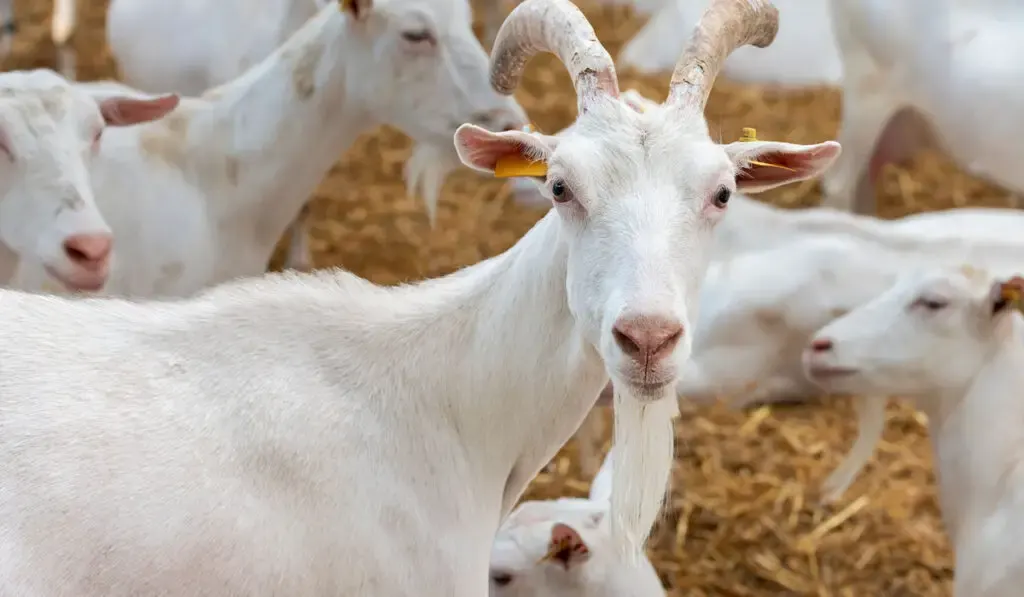
Generally, healthy and well-fed dairy goats can live up to 15 or 20 years.
Unlike meat goats, they have a longer life span because they are not being slaughtered frequently to keep up with the production and market demands.
There is quite a large market for dairy goats in the United States. As of January 1, 2017, there were about 373,000 dairy goats according to the USDA.
Dairy Goat Breeds
Different breeds of dairy goats come with different sizes, temperaments, quantities of milk, and butterfat composition.
Here are some of the most common goats being raised for their milk:
1. Sable Goats
Sable Goats are medium to large-sized goats with short hair and sturdy frame.
They originated in Switzerland and possess a similar appearance to Saanen goats.
But there is a difference in their coloration due to the interaction of recessive genes during their development.
They come in many different colors including black, white, gray, brown, and a combination of all these colors.
Sable goats are considered heavy producers of milk, producing up to one or two gallons of milk per day.
They also yield around 3 to 4 percent of butterfat in their milk.
2. Nigerian Dwarf Goats
Nigerian Dwarf goats could be considered a smaller version of the West African breed.
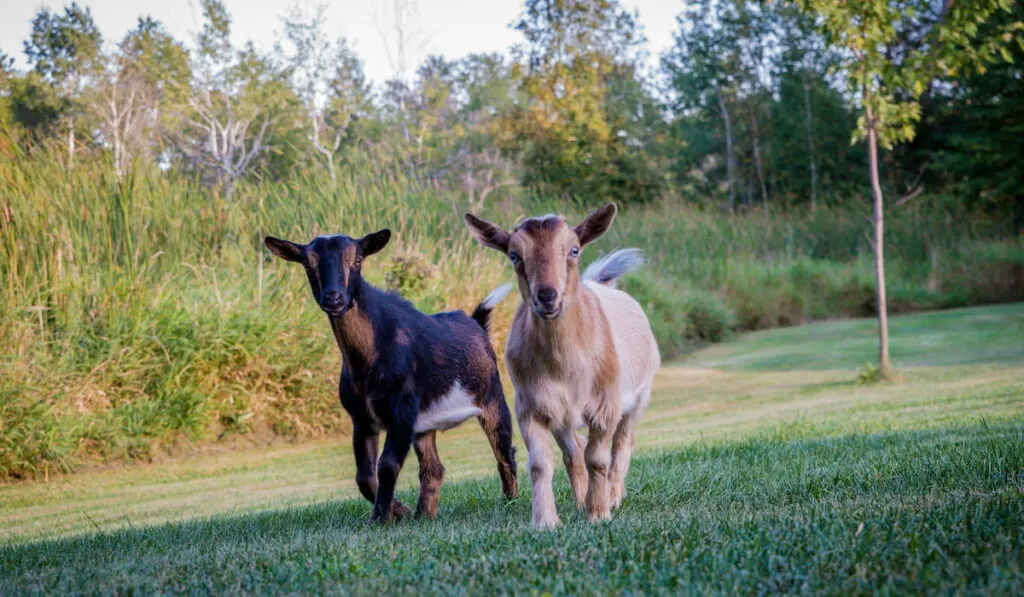
These small to medium-sized goats are well-known for their friendly and outgoing personality.
They have medium hair, pointy ears, and a short tail. Most of them come in major colors of black, brown, and gold.
They also have random white markings on their body and spots of different colors like red, gold, white, and black.
Nigerian Dwarf goats are heavy producers of milk.
Healthy and well-fed does of this breed could produce up to two quarts of milk per day with 3 to 4 percent of butterfat content.
3. Toggenburg Goats
Toggenburg goats originated in the Toggenburg Valley of Switzerland.
This medium size goat possesses a sturdy boat, short legs, slightly long neck, and short tail and is the oldest breed of dairy goat.
They generally have short hairs and solid body colors ranging from light fawn to dark brown.
Distinctive white or cream markings in linear shapes could also be found on their eyes, ears, mouth, legs, and tails. Their facial lines may be dished or straight, but not roman.
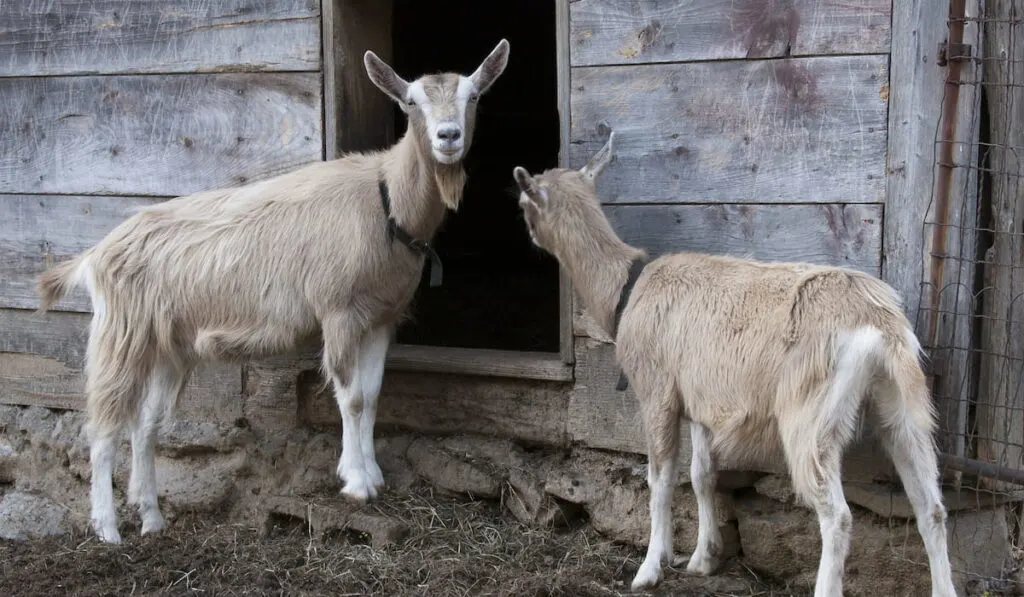
Although Toggenburg goats don’t produce a large amount of milk like Saanen, they possess excellent udder development and thrive in a cooler climate.
They also yield around 3.2 percent of butterfat content in their milk.
4. Alpine Goats
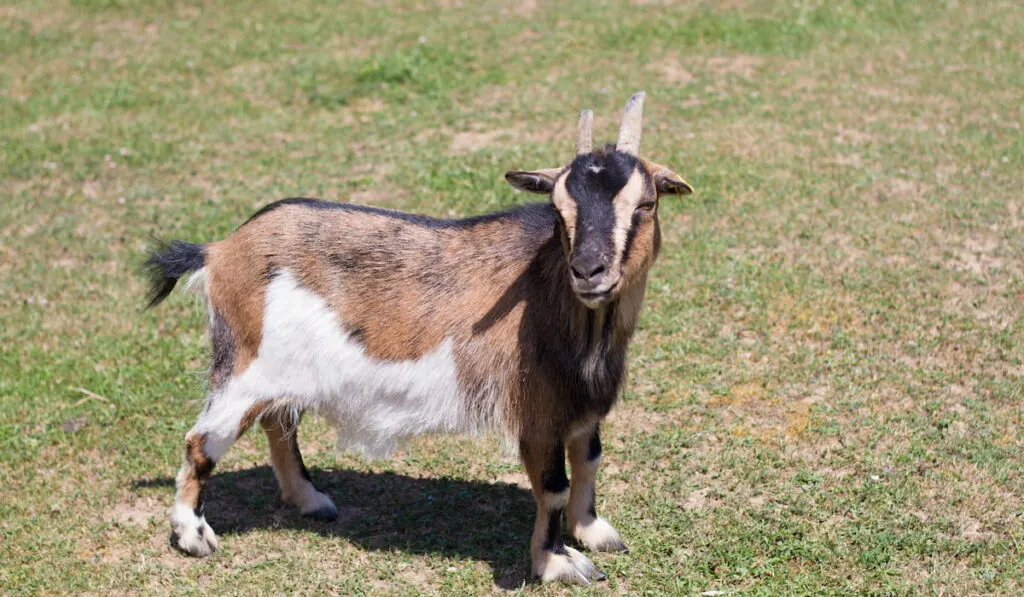
Alpine goats originated in the Alps and are considered a hardy breed that could thrive in harsh climates and environments.
They are also known as the French Alpine.
After being thoroughly selected for the best size, physical uniformity, and purity of the breed, they were brought from France to the United States.
Alpine goats are medium to large-sized goats with short hair and a set of long hair along their spine.
They also come in many different colors including brown, gray, black, fawn, red, buff, and other different shadings.
This goat breed can produce up to one gallon of milk per day.
In some cases, they could also produce up to two or three gallons of milk per day with around 3.4 percent of butterfat in their milk.
5. Saanen Goats
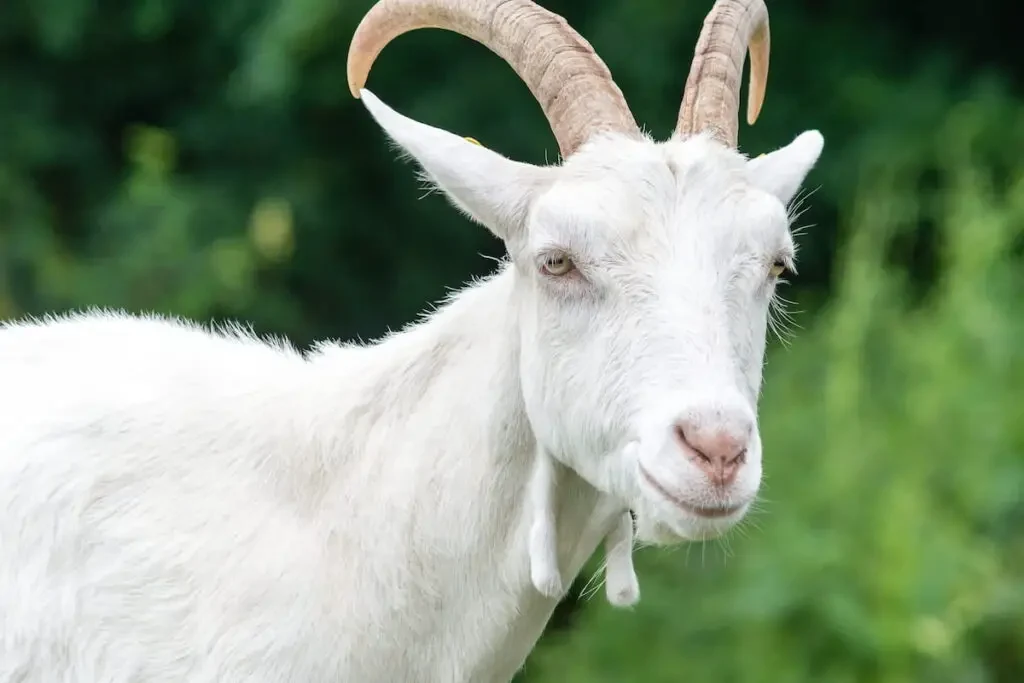
This dairy goat breed originated in Switzerland.
They produce a large amount of milk compared to other dairy breeds and are considered the world’s best-developed dairy breed.
Saanen goats originated in the Saanen Valley of central Switzerland.
They are medium to large-sized goats with short white hair and random black spots on their ears, udder, and nose.
They have medium-length ears that are erect and point forward. This breed can also be polled or horned.
Saanen goats can produce up to two or three gallons of milk with 3.3 to 4 percent of butterfat content per day.
6. LaMancha Goats
The LaMancha goats originated in Oregon. They were first created by a woman named Eula F. Frey.

The American Dairy Goat Association recognized them as a breed in 1958. LaMancha goats are medium to large-sized goats with short and flossy hair.
They have a well-built body and distinctive outer ears, which can be divided into two types.
The first type is the ‘gopher ear’ with a length of around one inch with little to no cartilage around it.
The second type of ear is the ‘elf ear’ with a maximum length of around 2 inches, and the presence of cartilage shaping the small ear.
Most of them come in major colors like white, brown, gold, black, and chestnut.
LaMancha goats can produce up to one or two gallons of milk with around 4 percent of butterfat content per day.
7. Oberhasli Goats
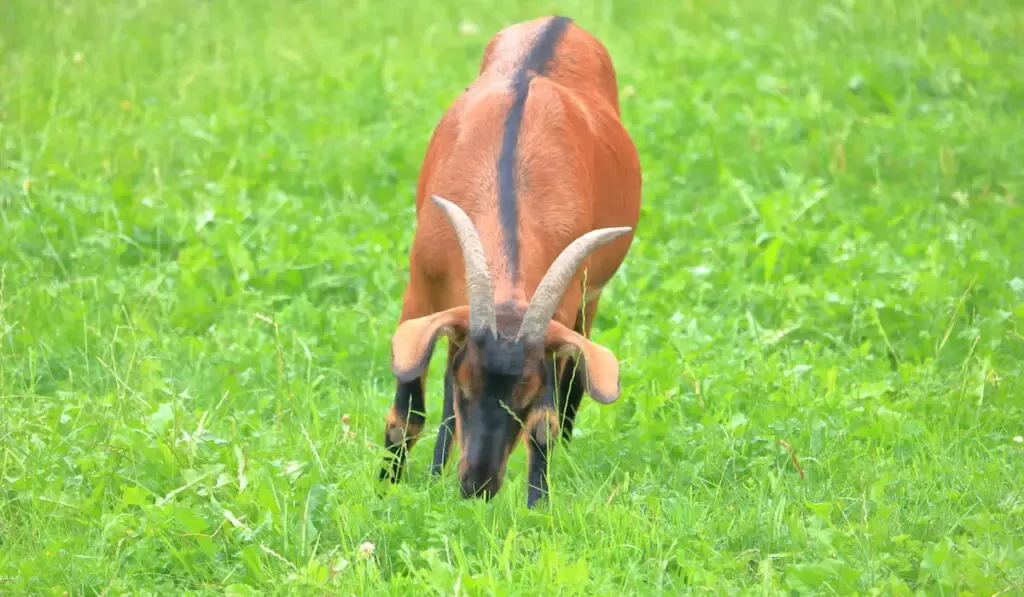
Oberhasli goats originated in the Canton of Berne in Switzerland before being imported to the United States for the first time in early 1900.
They weren’t recognized as a breed until 1977, where registration records were made to separate them from the Alpine breed.
These medium-sized goats possess sturdy bodies and straight faces.
Their base color is commonly light tan or reddish-brown with black points, with black or light gray belly, and black udder.
They also possess two black stripes from their eyes to their muzzle. In some cases, they might also come in black due to their recessive genes.
Bucks generally have more white hairs on the coats than does.
Oberhasli goats can produce up to 1,600 pounds of milk per year, one to two gallons per day with 3.9 percent of butterfat content in their milk.
Diets And Feeding Habits
Like any other ruminants, dairy goats need the same balanced diets and meals that provides enough proteins, vitamins, and energy for their growth and milk production.
Breeders and owners of dairy goats can feed their goats with pastures that are rich in vitamins and nutrients.
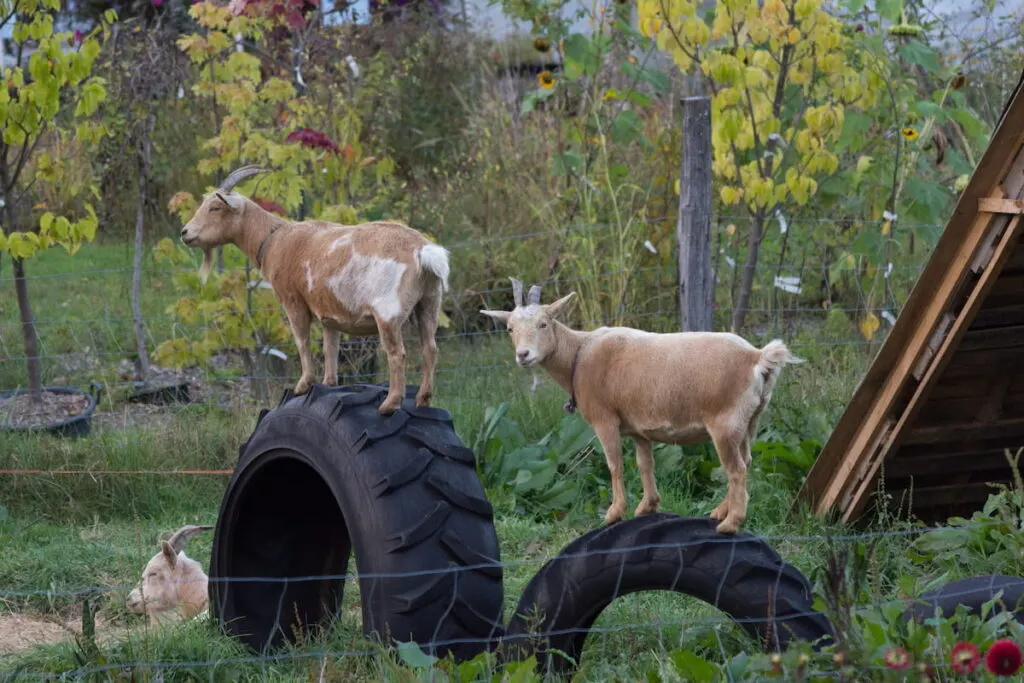
To reduce costs, breeders can also feed them with forages like silage, grass, and hay.
Although forages don’t offer enough nutrients, they are a good source of fiber.
Also, feeding them with mixed grains provides other minerals that are important for their milk production.
But the most balanced meals are the ones that consist of everything; protein, vitamins, and additional minerals and they should always be provided with fresh, clean water.
Maintaining Healthy Dairy Goats
For the most part, goats are generally hardy and adaptable animals that don’t need much attention other than basic minimal care.
But in some cases, there are certain health issues and diseases that owners and breeders of dairy goats should be aware of.
For example, internal and external parasitic infections can be identified by their signs like weight loss, diarrhea, and changes in hair and coat textures.
This can be treated by hiring a veterinarian or simply bringing their fecal sample to the nearest vets to find the presence of internal parasites.
There are also other infectious diseases and bacterial infections that can be found in goats like caseous lymphadenitis (CL), Johne’s disease, contagious ecthyma, foot rot, and mastitis (which is the infection of the udder).
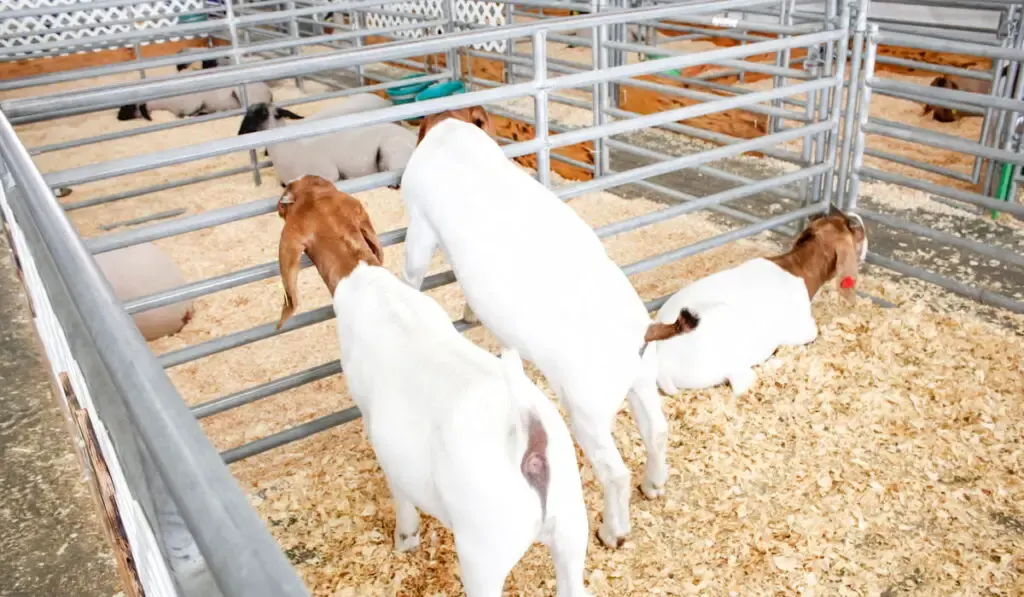
Prevent these by maintaining clean and healthy environments, trimming their hooves, sanitizing their pens frequently, and providing them with enough nutrients to fight off all of these diseases.
Final Thoughts
Above all, raising and keeping dairy goats healthy is mostly the same as maintaining other ruminant animals.
With the right care, dietary habits, proper living environment, they can thrive, grow healthier, and produce high-quality milk.
A regular check-up by the vets is also important to screen for any diseases that usually happen in their body system.
Citations
- https://www.agric.wa.gov.au/small-landholders-western-australia/introduction-dairy-goat-farming-small-landholders
- https://extension.psu.edu/dairy-goat-production
- https://chaffhaye.com/details/news/top-5-dairy-goat-breeds-for-small-farms
- https://americangoatfederation.org/breeds-of-goats-2/dairy-goats/
- https://www.hobbyfarms.com/dairy-goats-breeds-choose/
- https://www.motherearthnews.com/homesteading-and-livestock/choosing-a-dairy-goat-breed
Sable Goats
Nigerian Dwarf Goats
- http://afs.okstate.edu/breeds/goats/nigeriandwarf
- https://www.oregonzoo.org/discover/animals/nigerian-dwarf-goat
Toggenburg Goats
- http://afs.okstate.edu/breeds/goats/toggenburg/index.html/
- https://www.dpi.nsw.gov.au/animals-and-livestock/goats/breeds/toggenburg
Alpine Goats
Saanen Goats
- https://goats.extension.org/goat-breeds-saanen/
- https://www.dpi.nsw.gov.au/animals-and-livestock/goats/breeds/saanen
LaMancha Goats
- http://afs.okstate.edu/breeds/goats/lamancha/index.html
- https://goats.extension.org/goat-breeds-lamancha/
Oberhasli Goats
- https://zooatlanta.org/animal/oberhasli-goat/
- http://afs.okstate.edu/breeds/goats/oberhasli/index.html/
Diets, Feeding Habits And Maintaining Healthy Dairy Goats

